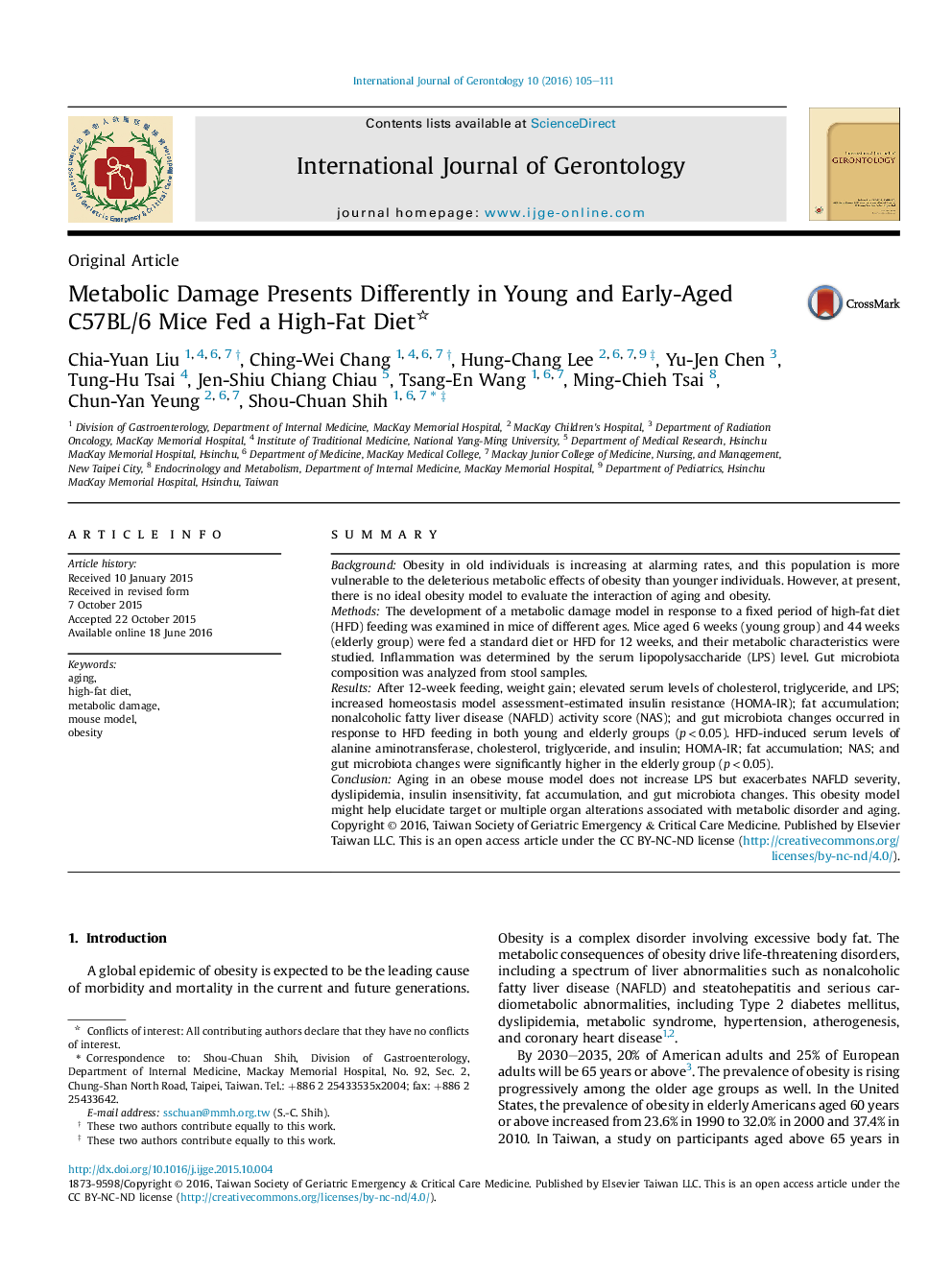| Article ID | Journal | Published Year | Pages | File Type |
|---|---|---|---|---|
| 3325043 | International Journal of Gerontology | 2016 | 7 Pages |
SummaryBackgroundObesity in old individuals is increasing at alarming rates, and this population is more vulnerable to the deleterious metabolic effects of obesity than younger individuals. However, at present, there is no ideal obesity model to evaluate the interaction of aging and obesity.MethodsThe development of a metabolic damage model in response to a fixed period of high-fat diet (HFD) feeding was examined in mice of different ages. Mice aged 6 weeks (young group) and 44 weeks (elderly group) were fed a standard diet or HFD for 12 weeks, and their metabolic characteristics were studied. Inflammation was determined by the serum lipopolysaccharide (LPS) level. Gut microbiota composition was analyzed from stool samples.ResultsAfter 12-week feeding, weight gain; elevated serum levels of cholesterol, triglyceride, and LPS; increased homeostasis model assessment-estimated insulin resistance (HOMA-IR); fat accumulation; nonalcoholic fatty liver disease (NAFLD) activity score (NAS); and gut microbiota changes occurred in response to HFD feeding in both young and elderly groups (p < 0.05). HFD-induced serum levels of alanine aminotransferase, cholesterol, triglyceride, and insulin; HOMA-IR; fat accumulation; NAS; and gut microbiota changes were significantly higher in the elderly group (p < 0.05).ConclusionAging in an obese mouse model does not increase LPS but exacerbates NAFLD severity, dyslipidemia, insulin insensitivity, fat accumulation, and gut microbiota changes. This obesity model might help elucidate target or multiple organ alterations associated with metabolic disorder and aging.
